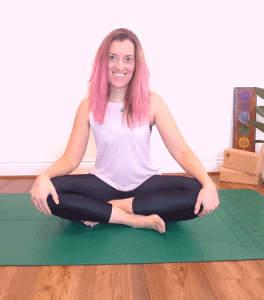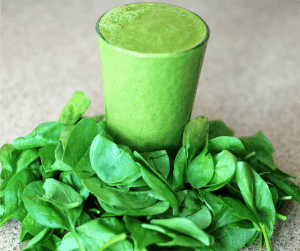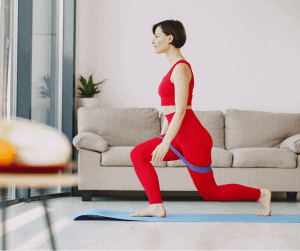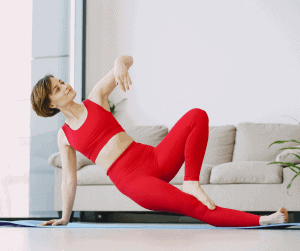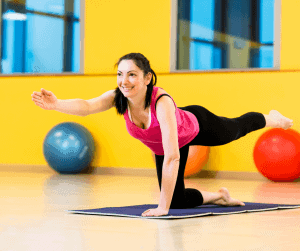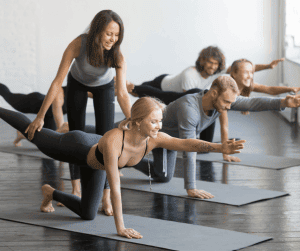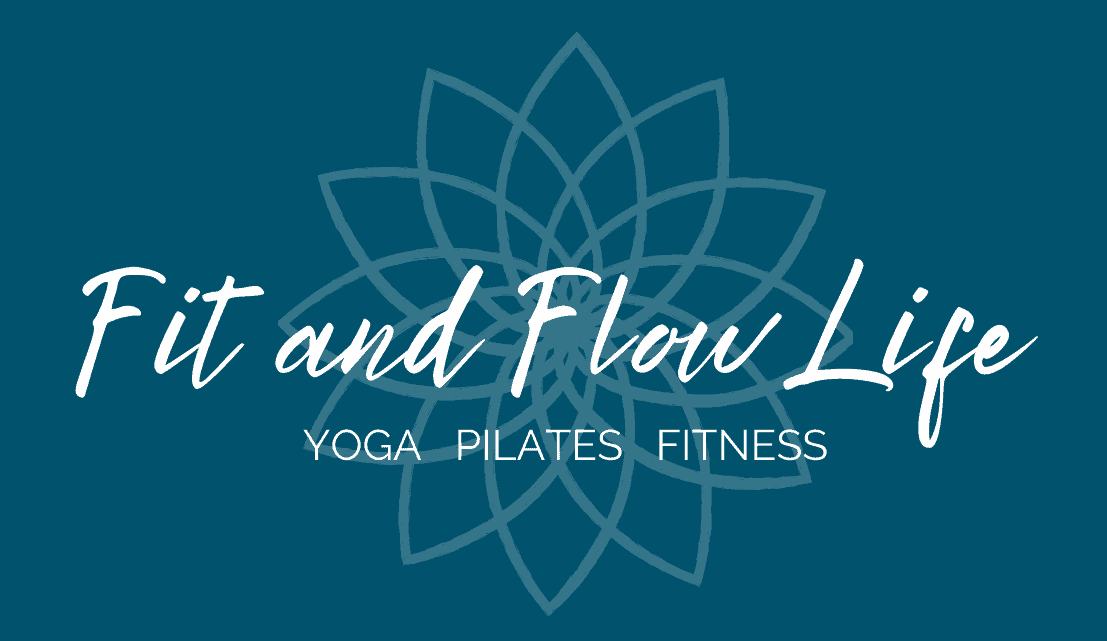Brief History
What kind of workout is Pilates? Well lets start with a brief outline of the history behind Pilates.
Pilates was once called ‘Contrology’ and named after its creator Joseph Pilates.
Joseph developed Pilates in the 1920’s for injured WW1 patients. Moving to New York in 1926, he opened his own studio. Here he began helping injured ballerinas from The New York City Ballet to keep their dancer form while recovering from injury.
Joseph’s Goal
Joseph’s goal was to create a method that allowed the body to move with ease and efficiency, including keeping the body balanced and controlled.
He believed that mental and physical health were closely connected and both needing to be in balance for a healthy body and mind.
From years of study and research, Joseph devised 34 fundamental exercises that would allow complete coordination of the mind, body and spirit.
Over the years Joseph’s exercises have been developed with a variety of approaches taken by leading instructors.
Today there are many different Pilates schools teaching variations of his method but the key principles remain the same.
These key principles are CONTROL, CONCENTRATION, CENTRING, BREATHING, PRECISION and FLOW.
It wasn’t until the late 1980’s that Pilates crossed over into the main stream fitness world where it still continues to grow in popularity.
Pilates is a low impact class
Pilates is a method of exercises that are low impact functional movement patterns. It works the entire body by moving in slow precise movements that connect to your breath.
Concentrating on posture, balance, and flexibility in Pilates, linking the mind and body connection. By being aware of your breathing and the way your body moves within each exercise helps establish a mind-body connection as well as support everyday movements.
Pilates movements improve posture, balance and flexibility, helping to strengthen and stabilise the muscles deep within the body. These include the stabilising muscles of the neck, shoulder, spine and pelvis with an emphasis on developing core and pelvis stability.
These muscles help to support your spine and when they do not function correctly, pain can occur in the lower back and pelvis.
A great reason to take up Pilates if you suffer with low back pain.
Strengthening the core helps to develop stability through the torso allowing more body control, shoulder stability and postural alignment.
Pilates also works to strengthen your legs, inner, outer thighs and butt often training one side of the body at a time. This helps muscles to develop evenly.
Although you may not work up a sweat like a high intensity class or be lifting heavy dumb bells, it can still be an intense work out and you will feel your muscles burn during and after a class. This means that you are challenging muscles in different ways to normal or working muscle groups that you wouldn’t normally do.
The risk of injury is much lower than other forms of exercise and many chose to take a Pilates class to help with injury recovery.
How long is a Pilates class?
Classes can vary in length from 30 minutes, 45 minutes to an hour long in studios and online. Most of my own classes are either 45 minutes or an hour long.
But if you are short on time then a quick 15 minute blast is a great option to do every day and something that is likely to be more achievable if you have a hectic lifestyle.
What kind of workout is Pilates? Mat based Pilates
Mat based Pilates classes can be done pretty much anywhere. You can take part in a class at a studio or try live online classes. Book-now to join one of my online classes.
They can be tailored to your own fitness levels and are suitable for beginners as well as more experienced people.
You don’t need much space to do Pilates at home. As long as you have enough space to roll out your mat on a flat surface, away from anything you could hit with your arms or legs!
Pilates mats are different to yoga mats, they are normally larger, thicker and not as grippy as a yoga mat. But that does not mean you cannot use a yoga mat if that is what you have!
Mat based classes often use small pieces of equipment such as dumb bells, resistance bands, exercise balls, Pilates ring or the ‘magic Circle’. Adding these can intensify resistance in the exercises and help to develop strength and balance.
What kind of workout is Pilates? Pilates machines
Specialized Pilates equipment in studios uses machines such as the Reformer or Cadillac.
Here is a little bit of information on two of the main Pilates machines that are normally found in Pilates studios.
The Reformer
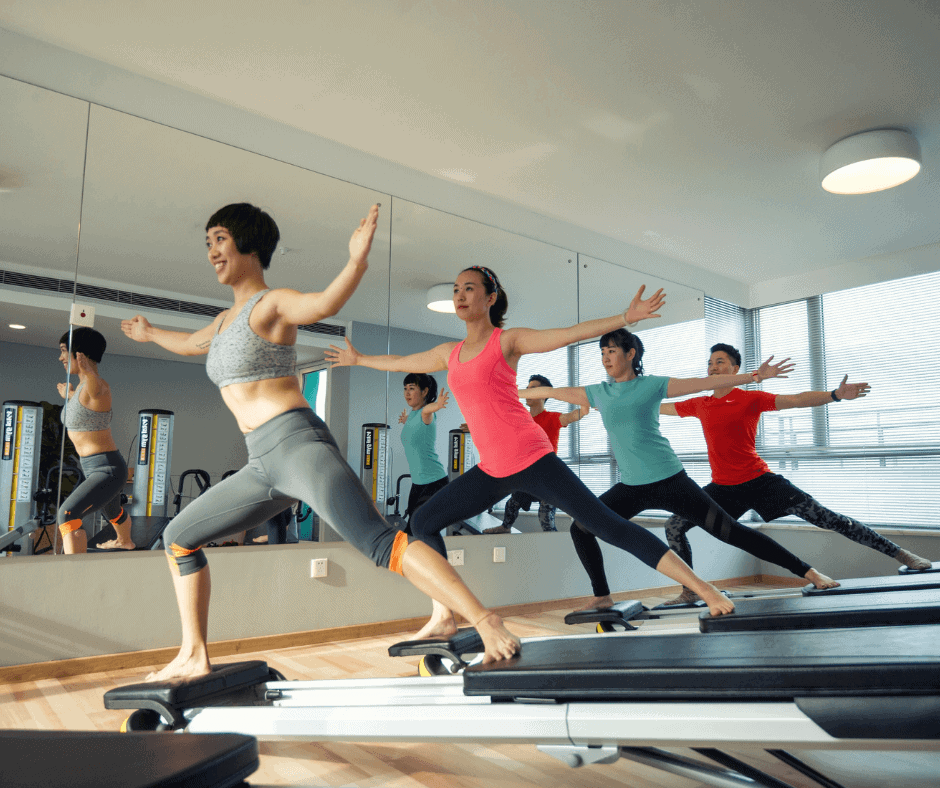
One of Joseph’s first pieces of equipment developed was the Pilates Reformer. He developed it while incarcerated as a hospital orderly on the Isle of Man during WW1, from an old bed frame and springs to help people recover from the flu pandemic and war injuries.
It looks like a bed/rectangle frame which has a sliding carriage and foot bar, springs (up to 5) and pulleys that provide varied resistance and intensity. This makes exercises more or less challenging for the client and more intense than a mat Pilates class.
Exercises on the Reformer involve pushing and pulling actions. Or exercises involve keeping the carriage still while the tension of the springs works against you while lying, standing kneeling or on all fours.
Exercises are normally grouped together in a sequence or series.
Exercises still focus on the same concepts of mat Pilates, working to lift against gravity with the added resistance of the springs.
The Cadillac
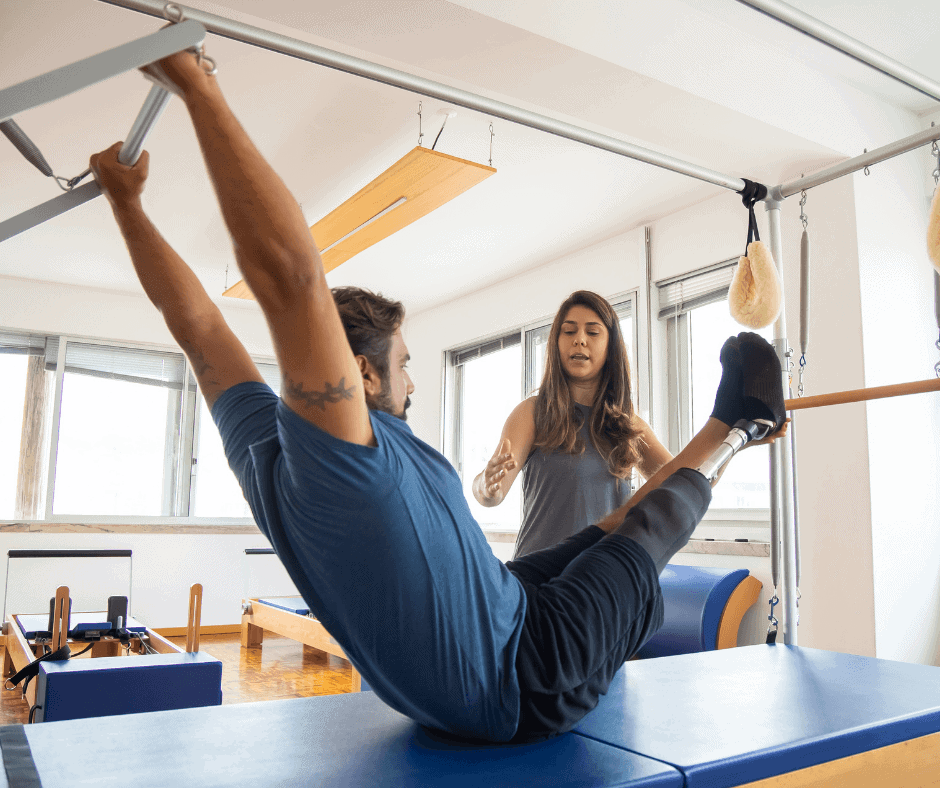
It is the largest of the Pilates equipment. A free standing piece of equipment with a thick mat raised off the floor. A frame surrounds it almost like a four poster bed. This provides support for bars and handles as well as other various attachments and springs. It is a stationary piece of equipment unlike the reformer.
Exercises on the Cadillac are performed in a wide range of body positions.
The Cadillac uses various accessories which add to assist or resist exercise movements. All of the exercises are performed in sequence and performed lying, seated, kneeling and standing. Focusing on specific areas of the body or working the entire body. This will depend on the client’s needs and abilities.
What kind of workout is Pilates? Is Pilates easy?
Many think Pilates is easy, people I speak with believe this true even if they have never taken a class. If they have attended a class and have found it easy, they have generally not performed the exercises correctly. Possibly moving too quick, with little to no body awareness or control.
Pilates if done correctly, will give you an excellent workout. You will feel it working in all the right places and often muscles you have not felt before!
Those that do give it a try, return time again, knowing the true benefits of what it does for you. They feel the mental health benefits it provides as well as the physical health benefits. This is why it has become so popular over the years and continues to grow.
Which Pilates option is right for you? This will depend on your own personal health and fitness journey, goals, injuries and cost.
Both have amazing benefits but machine Pilates is more costly to attend compared to mat based classes.
Trying a mat based Pilates class at home is a good place to start. You can follow an instructor online or attend a Pilates studio. A great option to try online while we are unable to attend studio classes.
If you would like to join one of my online Pilates group classes click here to book on. If you would like to try a private online class, please get in touch.
Interested in finding out more about the benefits Pilates can have? Check out my blog post on 5 benefits of taking regular Pilates classes.


